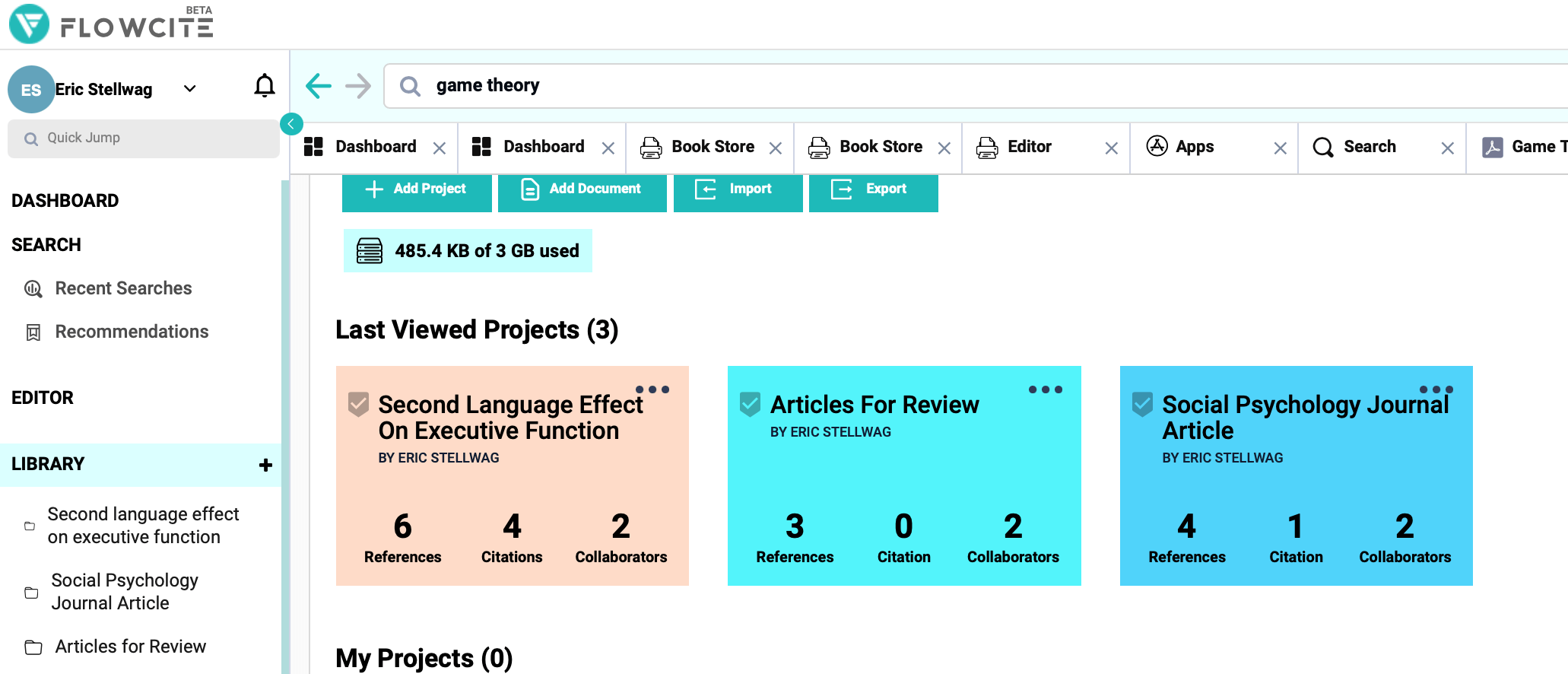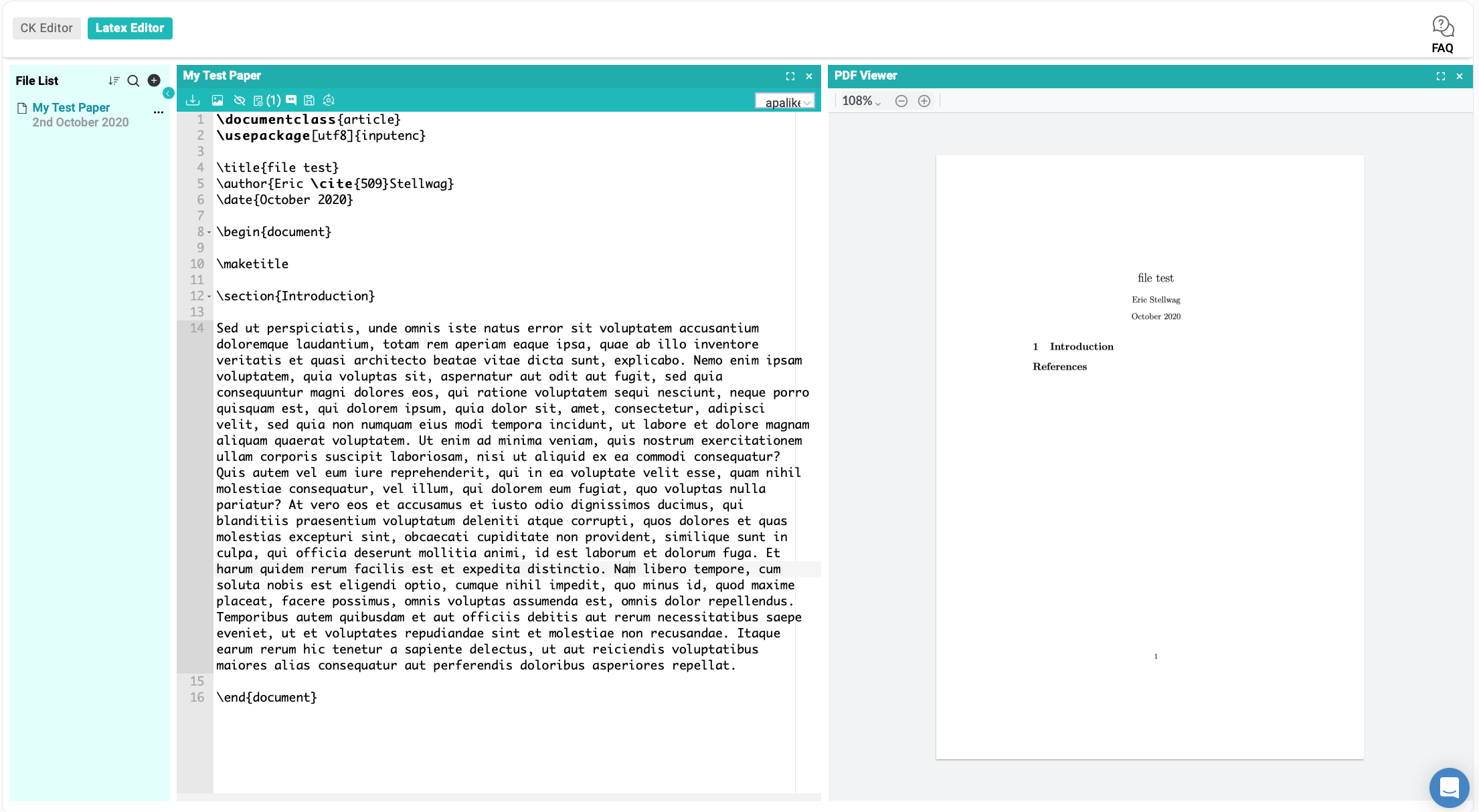Researching a Paper: Finding, Evaluating and Organising Sources

Not sure where to start with your research paper? Or perhaps you already know what you want to write about, but you’re struggling to find adequate sources to cite in your paper?
You’re not alone. Many undergraduate and postgraduate students (and even professional academic researchers) get stuck when it comes to finding the right sources and keeping them organised while researching a paper.
Luckily, there are many resources available you can use to save time and energy when you’re trying to locate and keep track of multiple references and citations. These help make the process of gathering and preparing your sources easier – letting you focus more of your energy on the part that really matters: writing a great research paper.
In this article, we’ll show you all the best techniques and tools for finding, evaluating and organising sources for your research paper. Whether you’re a student or a professional researcher, you can use these tips to access research databases, select the most credible sources and quickly pull relevant citations into your essay, no matter what field or subject you’re researching.
Finding Sources: Research Methods
The goal of academic research is to seek out the right information to develop your arguments and reinforce your hypothesis. Therefore, you need to develop a plan of attack before diving headfirst into research databases and online journals—after all, not every resource will be as crucial or relevant to your discussion, so to identify those that are, you first need to know what you plan on saying in your paper.
Preliminary Research Strategies
Here’s a basic example of how the research process works:
- Decide on your general topic.
- Example: verbal abuse’s effects on children
- Narrow your topic down to specific search parameters.
- Example: the effects of verbal abuse during early developmental years
- Write the overarching problem statement that your research will address. Although it can be a statement, you can also pose this as a question.
- Example: What are the lasting psychological effects in children who have experienced verbal abuse from their parents?
- Develop sub-questions from your main question.
- Example: What is classified as verbal abuse? Do victims become abusive themselves? Do they become self-destructive later in life? Do they develop depression and anxiety due to underlying childhood trauma?
- Identify the scholarly sources that will best support your argument.
- Example: medical and psychological research databases, such as PsycINFO and PubMed/Medline
- Write a bibliography as you gather and reference sources.
For deeper, more formal research, like projects conducted by professional researchers or postgraduate students, the steps are similar, but should focus more specifically on producing new insights or developments within your given field of study:
No matter which process you choose, you need to start by gathering basic information on the topic you want to cover. For basic, introductory research, Google and Wikipedia are where most people start, but you need to be careful when researching a paper using these methods.
Here are some tips for using these platforms wisely if you’re new to researching:
- Check Wikipedia footnotes and embedded links for reference. Don’t use Wikipedia pages as an official source, as they can be edited by anybody, at any time. However, Wikipedia can sometimes be a good source for finding other references, as long as you exercise caution when evaluating the credibility of the sources.
- Use “Ctrl+F” on web pages to easily find the keywords you want to focus on.
- Use Google Advanced Search to get narrower results.
- Narrow your search parameters by using quotation marks (e.g., “Wars” in “Spain”) and restricted domains (e.g., “site:.gov” or “site:.edu” or “site:.org”) to find more credible sources.
As you go through your search, try to narrow your topic down into a single, specific focus. If you find an overwhelming amount of scholarly sources arguing similar theses, the research you’re doing might be too broad. On the other hand, if you’re struggling to find enough good source material at all, your subject might be too narrow.
Intermediate Search Strategies
Scholarly sources come in three different varieties: primary, secondary and tertiary. Here are some examples of each kind of scholarly source:
Ideally, you want a mix of both primary and secondary sources in your research, while avoiding tertiary sources. Primary scholarly sources provide information closest to the topic to help you draw original conclusions, while secondary scholarly sources provide scholars’ perspectives on primary sources and give you an up-to-date picture of modern scholarship’s current views on the issue.
By combining these two kinds of sources, you’ll gather direct evidence, while gaining a greater understanding of what other scholars have already discovered or argued about your topic.
Note: As you search on the internet, you may come across a lot of “popular sources” that are not as credible as scholarly sources. These “mainstream articles” serve a different purpose than scholarly articles, and therefore should be avoided when conducting proper research for an academic paper.
To differentiate between popular sources and scholarly sources, pay attention to these four factors:
| Factors | Popular Sources | Scholarly Sources |
| Audience | Broad; assumes that the reader doesn’t know much about the topic | Narrow; expects the reader to already be familiar with the subject |
| Author | May have a broad area of specialisation (e.g., journalists, war correspondent, media critic, bloggers) | Typically written by an expert that has a degree or extensive experience in the specific field discussed |
| Research | May have references, but not a bibliography | Has summaries, quotations, footnotes, citations, and a bibliography at the end |
| Publication | Typically only reviewed by an editor and proofreader | Goes through the peer-review process, where experts contribute their input prior to publication |
Scholarly articles and online journals are typically more credible than blogs, so we suggest starting with Academic Search Premier, ProQuest, or any university library when beginning research for your paper. You can also check Google Scholar to access a large number of scholarly sources and academic papers which are available online.
Here are some tips on using Google Scholar:
- Be specific – When searching, make sure to include specific keywords. Simply putting “crime,” when you really want academic papers on “crime in French literature” will result in a million research papers on sociology, psychology, geology, and other disciplines, so always narrow the results as much as you can.
- Don’t pay for an article if you can get it for free – As you research in Google Scholar, you may come across scholarly sources that are behind a paywall. If you’re a university student, you might be able to find the same source on your library’s website. Alternatively, try checking Academia.edu, or ResearchGate.net for a free version of the academic paper.
- Use the “cited by” feature – If you come across a near-perfect source on Google Scholar, you’ll be able to see a list of other research papers that reference the same source. This feature is handy for delving even deeper into your chosen area of research.
Advanced Search Strategies
If you’ve maximised the research capabilities of Google Scholar, the next step is to immerse yourself in library or research databases to find more books, reference materials, online journals and scholarly sources.
Below are some databases that you can check out, as well as the field of study which they specialise in:
- ABI/Inform – Business
- Academic Search – General (Multidisciplinary)
- JSTOR – General (Multidisciplinary)
- Nexis Uni – News
- PsycINFO – Psychology
- PubMed/Medline – Medicine
- ScienceDirect – Science (Multidisciplinary)
- Scopus – General (Multidisciplinary)
- Web of Science – General (Multidisciplinary)
You can search using keywords or fields, depending on the information you currently have or the types of data and insights you’re hoping to find. For a keyword search, input the main concepts or synonyms for your keywords. For field search, you can filter database results through a specific author, subject, title, or abstract.
Boolean Searching
Boolean searching is an advanced research method that you can use to comb through the academic papers in research databases. This involves the use of words like “and,” “or,” and “not” to refine search results for the specific scholarly sources you need.
Here are some examples:
- And: Searching “endangered animals and global warming” will give you research papers where both terms are present. In other words, you’ll only get the online journals where the two topics overlap.
- Or: Searching for “taiwanese prisons or chinese prisons” will give you results with either of the two search terms. This increases your number of results, because results for both Taiwanese and Chinese prisons will show up.
- Not: Searching for “Dallas cowboys not football” will limit the results to cowboys in Dallas that are not related to the sports team (the Dallas Cowboys) and instead are related to cowboys in Dallas. “Not” is useful in this way when search terms have multiple meanings, such as “apple” (which is both a fruit and a company).
Evaluating Sources: Determining Legitimacy
As you collect information, you need to evaluate all of your scholarly sources and determine their quality. Your goal is to figure out if a particular research paper provides high-quality information and is helpful in answering the questions you raise in your research.
There are many ways to evaluate a source’s legitimacy, but most of them look at the same criteria:
- Purpose – Knowing the reason behind the study/source will allow you to evaluate and use its data with the right perspective.
- Authority – Knowing who the writer is and their credentials will help you evaluate the credibility of the research they conducted. The journal in which they published the piece also speaks to the credibility of their work.
- Accuracy – As a general rule, you should always cross-check to confirm if a source was written with accurate and proper research methods. Their inaccuracy might harm your own credibility.
- Reliability – Checking if the source used reliable references helps you confirm its accuracy and credibility.
- Currency – Knowing when the source was written might be crucial for time-sensitive research. In general, you should only go back a maximum of six years, unless you’re establishing a history of scholarly opinions on the topic. This ensures that your research won’t be outdated.
- Objectivity – Knowing if the source was written with a bias or agenda will help you evaluate and use its information properly, without being swayed by advertising or opinions.
Here is a checklist to help you evaluate your scholarly sources:
Purpose and Intended Audience
- What is the purpose of the research paper? Is it to provide information, persuade, advocate, entertain, or sell a product or service?
- Who is the intended audience of the research paper? Is it scholars and academic researchers, the general public, or students in university?
Authority and Credibility
- Who is the author of the research paper? Is it a person or an organisation, such as a government agency, nonprofit, or corporation?
- What are the qualifications of the author? Do they have any subject matter expertise? Are they affiliated with an organisation?
- Who is the publisher of the research paper?
- For books, is it from a university or a commercial publisher?
- For online journals or magazines, is it popular or scholarly?
- For websites, is it a corporate website or a personal blog?
Accuracy and Reliability
- Is the information well researched?
- Are there references to scholarly sources that prove the claims made?
- Are the facts and statistical data verifiable by another scholarly source?
- If the data was gathered using original research, what was the method of data collection? Is the validity or reliability of the data disclosed? Was it done with a quantitative or qualitative method?
Currency and Timeliness
- When was the information published?
- Is current data required for your research?
Objectivity or Bias
- Is the research paper opinionated or based on facts?
- Is the information presented objective or subjective?
- Does the information promote a particular agenda (e.g., political, religious, or social)?
- Does the source include and disclose any advertising or marketing within the content?
Organising Sources: Essential Management
A popular research workflow goes like this:
- Search on Google, JSTOR, Library, online journals, etc.
- Skim through the scholarly sources, then pick those that you’ll read fully.
- Spend hours reading through sources, discarding those which are irrelevant and saving those which you plan to use in your research.
- Copy-paste whatever is useful into your research paper, going back and forth between your document and research tabs as you work.
- Take note of every page number and create footnote citations as you write.
- Double check all references and fix any errors (manually inputting an incorrect publishing date, etc.).
- Finally, gather all your citations together to write the bibliography, including the title, author, publishing date, and other details, into a specific format to be included in the final research paper.
This isn’t the most efficient process, but you can work faster by organizing your research as you go. There are many digital tools available that facilitate the research process, automate time-consuming tasks like generating bibliographies, and free up your mental energy for the most important work: writing your paper.
Below are just some of the common tools that researchers use to do this:
- A reference management system that combs through research databases and saves references and citations for your research, automatically inserting them into the research paper.
- An article summariser that evaluates a scholarly source very quickly without you having to read the whole thing (e.g., AI-driven summarisers).
- A source formatting service where experts revise your research paper for you according to your chosen journal’s format (e.g. bibliography style, fonts, structure, etc.). This service eliminates the chance of rejection or penalties due to formatting errors.
Although you can get these tools individually, there are softwares that can integrate every single tool you need to conduct credible research.
Flowcite, for example, integrates many aspects of the research process into a single platform, making finding, evaluating and organizing sources much more efficient.
Here’s an example of how
Search for your topic and find relevant scholarly sources in the Flowcite Library of research databases. You can also use the browser extension to save sources from third-party websites.
Generate a summary of each source with the Article Summariser so you can evaluate them at a glance
Save any useful references in your Project Library, where you can read PDF versions of the online journals and academic papers you saved and cluster citations together to organise sources according to their topic or position in the paper.
Start writing your paper on your text editing software of choice, and add citations directly into the text using Flowcite’s Word Plugin, or the in-app LaTex or rich text editors.
All saved sources can be added to the bibliography later on with the click of a button.
With tools like these, you don’t have to evaluate and organise sources manually—allowing you to focus on the value and content of your research, and save hours spent reading, saving, and referencing multiple sources.
Conclusion
The future of academic research (and research in general) will be more technology-driven than ever before, and this presents both challenges and opportunities for student and professional researchers alike.
Digital databases have given researchers around the world unprecedented access to high-quality scholarly sources, but this wealth of information can also make finding, evaluating and organising the right sources for your research paper a very time-consuming process.
Technology can also be the solution, however. With powerful new tools available that make the academic research process more efficient from start to finish, you can access a huge volume of research, easily synthesise data and insights from your sources, and write your paper and bibliography, all within a single platform.
Check out Flowcite’s AI-driven Article Summariser to see how you can eliminate hours of time spent evaluating sources by leveraging the latest technology in your research.







